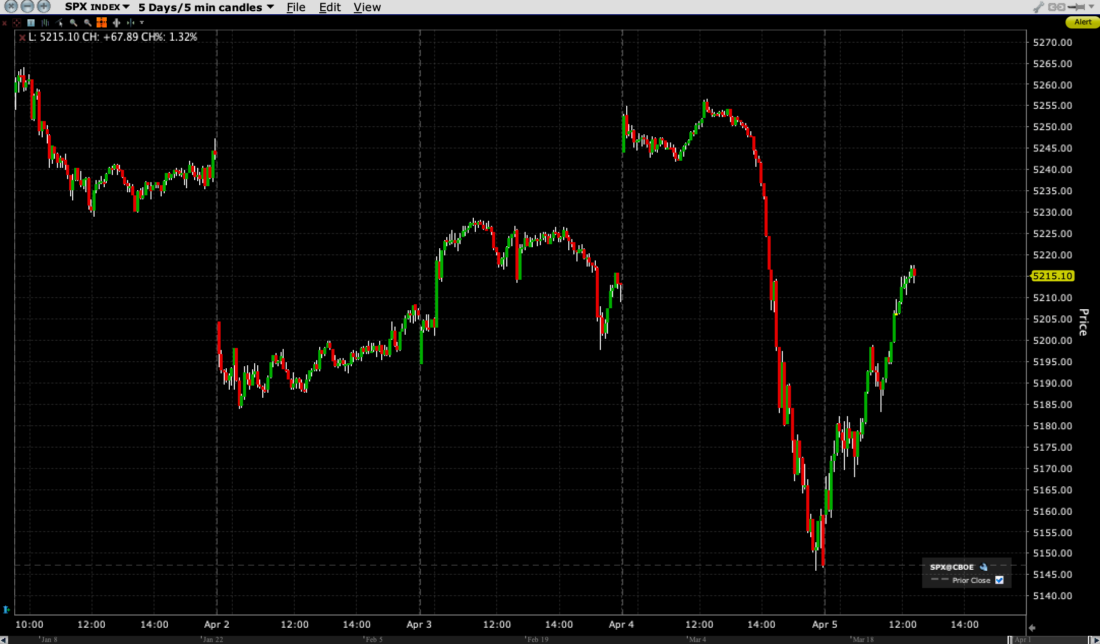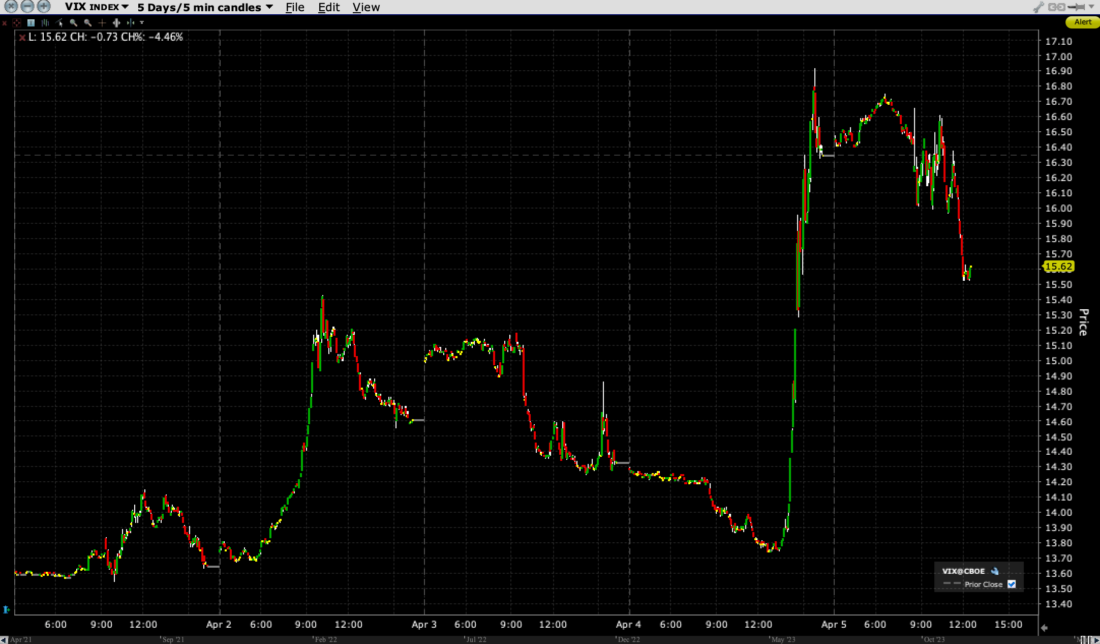Another month, another upside surprise in Nonfarm Payrolls. Another day, and another bout of volatility. Can we expect both to continue?
Here was my early reaction to this morning’s employment report:
It was clear from yesterday’s abrupt decline that traders suddenly became nervous about the prospect of holding long positions ahead of a Payrolls report. The decline would have been less eye-popping had traders not opened the day by chasing a modest rally for no apparent reason.
The key to this morning’s activity was that the reports were largely in line with expectations, with the obvious exception of the headline. An outlier in either direction would have spurred a dramatic reaction. Instead, today’s report showed the continued resilience of employment and wages, but not necessarily enough to change the narrative of a market that has already been steadily reducing its rate cut assumptions. The report is another data point in the “why exactly do we need rate cuts” school of thinking that includes [regional Fed Presidents] Bostic, Cook, Kashkari (and me).
First, a quick visual to show the market movements from yesterday and today with the perspective of the entire week’s trading thus far. As of midday today, we see a +1.3% rally in the S&P 500 (SPX), but that gets back only about half yesterday’s intraday loss and still leaves us lower for the week:
SPX 5-Day, 5-Minute Candles

Source: Interactive Brokers
Now let’s unpack the earlier sentences. Yesterday we experienced a major intraday reversal. While the SPX close-to-close decline was less than 2% – a daily drop that we haven’t seen in months – the intraday high/low range on that index was 2.1%. It came seemingly out of nowhere. Some reports attributed it to comments about a lack of rate cuts from Minneapolis Fed President Kashkari, but the reaction seemed outsized considering that other Fed Presidents – some of them voting members, unlike Kashkari – had made similar comments in recent days that were largely ignored by traders. Some attributed the drop to the fact that Brent crude crossed the $90 mark. We had literally written just that morning about how rising oil prices posed risks to the stock market, but that seemed like an extreme reaction to a situation that has been building slowly. (I’d like to think I’m on the ball, but I’m not THAT good).
Instead, I attribute the reversal to two factors:
- It’s not clear why we were rallying yesterday morning in the first place. Sure, it was understandable why traders might have started that day by buying the recent dips, but that was a bit much. Pre-market futures were up about 10 points or so. Quite fair. Why they shot up to +40 was not. Traders have generally done very well by pouncing on even the slightest excuse for a rally, but there was no follow-through.
- Once it was clear that the rally had no legs, we saw some profit-taking. That’s quite sensible. But it’s one thing to take profits on a normal day, another when there is a potentially market-moving set of economic reports due the following morning. There is a lot less incentive for traders to want to go home long, so when the selling got started, it cascaded quickly. Ironically, the lack of an obvious catalyst may have made the selling worse since few understood why it was occurring.
Today we see a very solid rally after the numbers reaffirmed the notion of a solid economy. Bond yields ticked up once again, but rate cut expectations remained generally in place (currently 60% for June, 100% for July, 2.75 cuts expected by December). Bearing in mind that buy-the-dip and rally chasing remain a key feature of traders’ mindsets, it shouldn’t be all that surprising to see a rally that metastasizes yet again into something greater than the news might suggest. Bear in mind that today is Friday, and in a bull market, traders are less concerned about the risk of going home with long positions than they are about the potential reward of chasing the 600+ stocks and indices that have expiring weekly options (as opposed to the handful of indices and ETFs with daily expirations).
Here’s one final thing to keep in mind: today’s rally has barely dented the Cboe Volatility Index (VIX). Sure, that too has dipped as today’s rally continued, but it shows little current indication of returning immediately to the lower end of the recent 13-17 trading range. Might this mean that investors have a little more regard for risk and volatility. We’ll see if that holds.
VIX 5-Day, 5-Minute Candles

Source: Interactive Brokers
Disclosure: Interactive Brokers
The analysis in this material is provided for information only and is not and should not be construed as an offer to sell or the solicitation of an offer to buy any security. To the extent that this material discusses general market activity, industry or sector trends or other broad-based economic or political conditions, it should not be construed as research or investment advice. To the extent that it includes references to specific securities, commodities, currencies, or other instruments, those references do not constitute a recommendation by IBKR to buy, sell or hold such investments. This material does not and is not intended to take into account the particular financial conditions, investment objectives or requirements of individual customers. Before acting on this material, you should consider whether it is suitable for your particular circumstances and, as necessary, seek professional advice.
The views and opinions expressed herein are those of the author and do not necessarily reflect the views of Interactive Brokers, its affiliates, or its employees.
Disclosure: Options Trading
Options involve risk and are not suitable for all investors. Multiple leg strategies, including spreads, will incur multiple commission charges. For more information read the “Characteristics and Risks of Standardized Options” also known as the options disclosure document (ODD) or visit ibkr.com/occ
Disclosure: ETFs
Any discussion or mention of an ETF is not to be construed as recommendation, promotion or solicitation. All investors should review and consider associated investment risks, charges and expenses of the investment company or fund prior to investing. Before acting on this material, you should consider whether it is suitable for your particular circumstances and, as necessary, seek professional advice.

